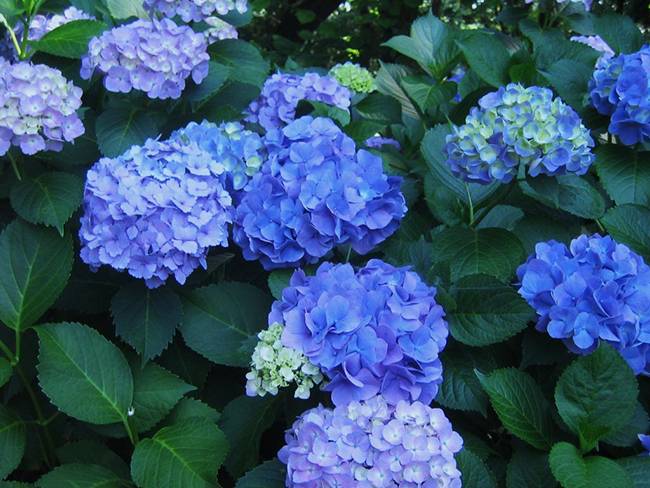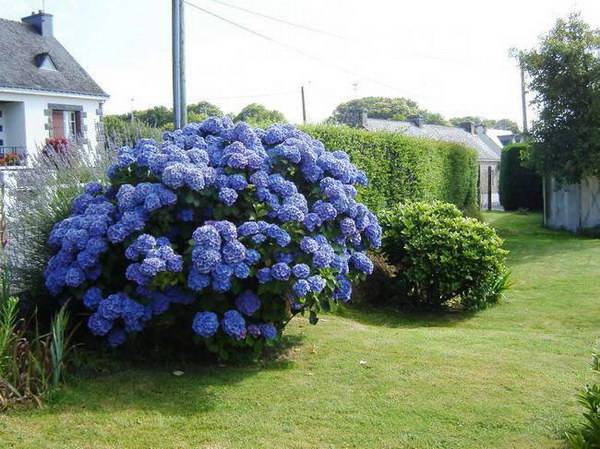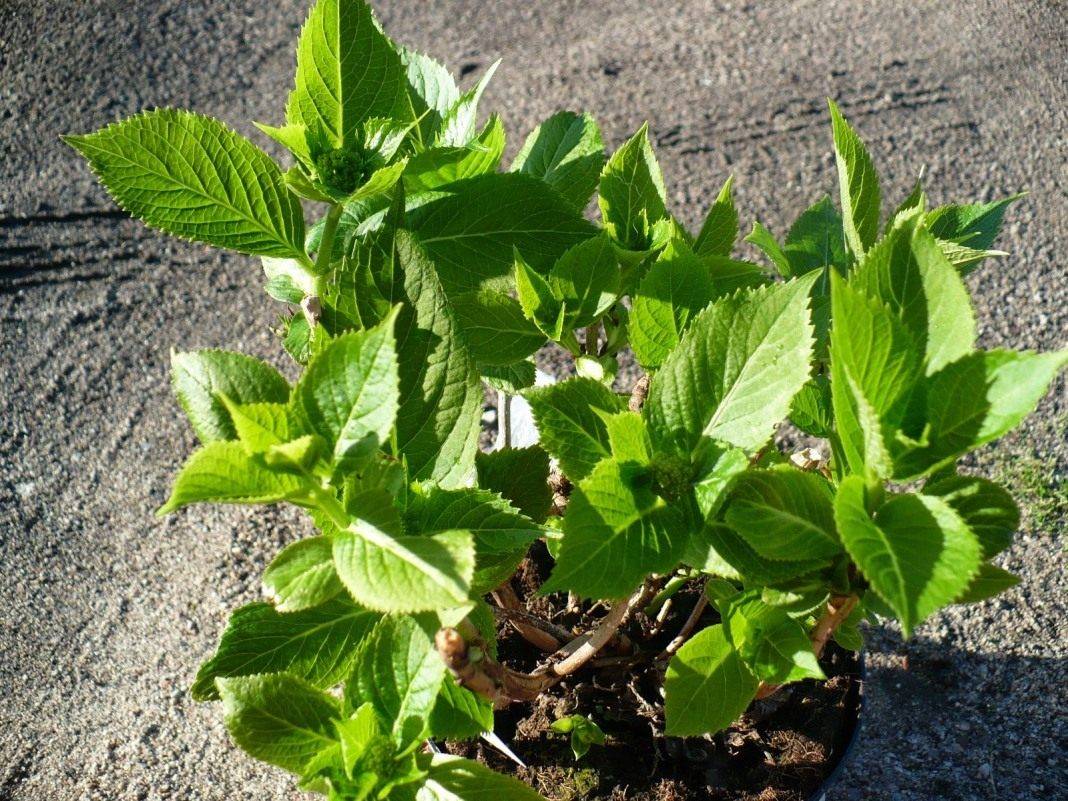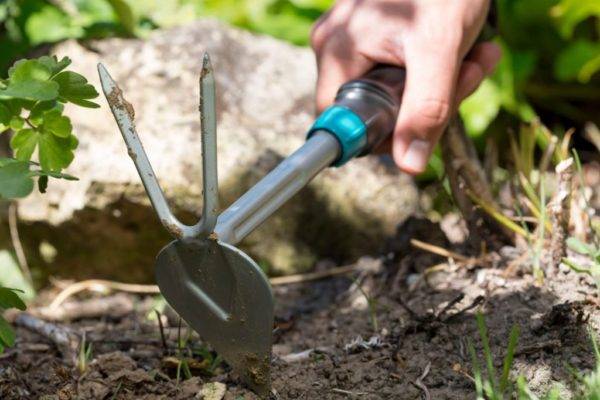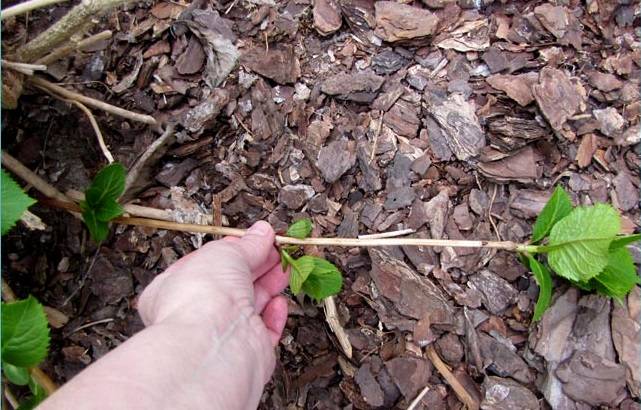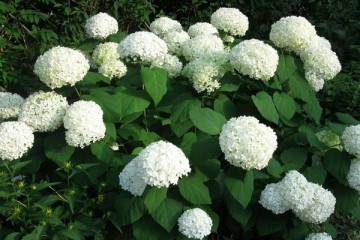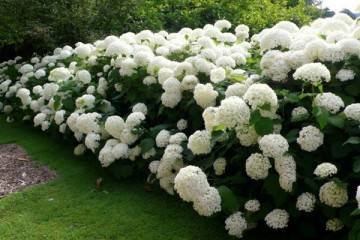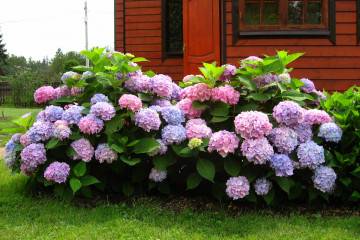Hydrangea blue or blue - description of varieties, planting and care in the open field
Content:
Blue hydrangea is a spectacular garden culture, which is adorned with beautiful inflorescences. The plant looks very unusual, so it is often used to decorate areas. It can be grown outdoors or at home. At the same time, the culture should be provided with quality care.
Description of hydrangea blue (blue)
Hydrangea blue or blue does not belong to a separate variety. It got its name from the color of the buds. It is most often found in large-leaved varieties.
Origin
The birthplace of hydrangea is North America. She came to Asia much later. Europe managed to discover the flower only in the 18th century. The tree culture became the first variety.
Features of the
This plant can reach a height of 1-3 m. It is characterized by lush inflorescences that resemble a ball in shape. The culture is resistant to frost and needs sufficient moisture.
Pros and cons
Blue garden hydrangea has the following benefits:
- decorative properties;
- beautiful blue inflorescences;
- the possibility of using in landscape design.
Winter hardiness
Frost resistance depends on the type of plant. Most crops are considered frost-resistant. They can be grown in various regions - in the Middle Lane, the Moscow region, the Volga region or Siberia. However, in the northern regions, the plant must be covered for the winter.
Blue hydrangea varieties
Today, many varieties of this culture are known. Hydrangea Blue has many benefits.
Are there tree and paniculate blue hydrangeas
The appearance of the culture depends on the variety. Hydrangea paniculate blue has cone-shaped flowers 25 cm long. This perennial plant can reach a height of 2 m. The petals can be purple or blue. Flowering lasts from August to November.
The tree-like variety can grow up to 3 m. The plant is characterized by oval leaves, the length of which is 20 cm. Panicles include small flowers. The stems of the plant need to be pruned every year.
Large-leaved blue hydrangeas
Large-leaved blue hydrangea can accumulate aluminum from acidic soil. This is what gives its flowers a rich blue color.Today, many varieties of such hydrangea are known. The Blue Sky hydrangea and other species are very popular.
Earley Blue (Early Blue)
Hydrangea Early Blue has strong roots. The owners of this variety grow it not only in the open field, but also in pots. The plant is compact and needs to be tied up.
Blue Wave
The Blue Wave variety is translated as Blue Lagoon. This Dutch variety is characterized by large bushes that reach 1.5 m. The culture has gorgeous inflorescences that form on the shoots of the last year.
Romance Blue
The plant is resistant to frost. It is characterized by double blue flowers. The inflorescences are large and can reach 25 cm.
Cabaret Blue
At the beginning of flowering, the plant has a white-pink color. It gradually changes and turns blue. The inflorescences reach 15 cm in diameter. Strong shoots can be cut and used to create bouquets.
Mini Penny
The plant is characterized by large globular inflorescences. When grown in alkaline soil, they become pink in color.
Bodensee
Bodensee is considered to be relatively new. It was bred in New Zealand. The description of the plant indicates that it has strong roots and resistance to frost. The culture is considered large-leaved.
Freedom
The flowers of this plant do not turn blue immediately. Initially, they have a white-pink color, which gradually changes to blue. Inflorescences of different shades may be present on 1 bush.
Kompeito
This culture is characterized by purple-blue inflorescences with a white center. The flower has smooth petals and oval leaves.
Jomari
Flowers resemble stars and can be blue or blue. The shrub reaches 80 cm in height. Flowering continues in June-October.
Landing in open ground
Planting and caring for blue hydrangea has certain characteristics. In this case, you need to choose the right place and soil.
Site and soil selection and preparation
The plant should be planted in partial shade or shade. It is important that the crop is not exposed to strong winds. Be sure to pay attention to the composition of the soil. You can make it yourself from forest soil, sand, peat and humus.
Next to which plants it is better to plant
Hydrangeas can be planted next to crops that also need acidic soil. The best options would be roses, peonies, lupines. You can also plant asters, chrysanthemums, lilies near it.
How to plant
You can plant a bush in spring and autumn. First, you need to make a hole 45 cm deep. The width is chosen taking into account the size of the root system. When planting several crops, you can make a distance of 60-70 cm between them. This will help get a lush flowering.
Blue hydrangea care
Many gardeners are interested in how to care for a blue hydrangea. The plant must be watered, fed, cut on time.
Watering
The culture needs abundant watering. It needs to be moisturized 1-2 times a week. In summer, 3 waterings per week may be required.
Fertilizing and feeding
The first 2 years, the plant can not be fed. Then the bush needs to be fertilized 3 times - in early spring, before the formation of buds and at the end of the season. For the first time, it is worth adding nitrogen, potassium and phosphorus. At the budding stage, superphosphate, potassium and urea are used. The third time, you can use chicken manure or dung.
Mulching and loosening
After each watering, the soil must be loosened.This should be done carefully to avoid damage to the root system. To prevent moisture evaporation, the soil is covered with a mulch layer.
Pruning
Bush pruning is carried out in the spring. This should be done on adult plants 4-5 years old. In this case, it is necessary to get rid of old branches and overgrown young shoots. Correct pruning makes the shrub more lush.
Preparing for winter
The plant has excellent frost resistance. However, you should not neglect the insulation of the bushes. At the first frost, the trunk must be piled up, and then covered with agrofibre and a wooden box.
How to water a hydrangea to make its flowers blue
To give the hydrangea flowers a blue tint, it needs to be watered with ammonium sulfate. To do this, you need to take 15 g of the substance for 1 liter of water. This helps to maintain the acidity of the soil. It is also permissible to use peat or sulfur.
Reproduction
The culture can be propagated in different ways. Each of them has certain characteristics.
Growing from seeds
This is the most time consuming method. Most hydrangea varieties are hybrids. In this case, it will not be possible to grow a crop from seeds.
Cuttings
First you need to prepare cuttings - stems with 2-3 buds. They should be soaked in water and then immersed in a growth promoter. Then the cuttings can be planted and covered with jars. After a month, foliage will appear.
Dividing the bush
In this case, the bush must be dug up and carefully divided into parts. The resulting bushes can be planted in a new place.
Layers
To do this, you need to take a side shoot and dig it into the ground. After a while, the roots will appear. The bush needs to be separated and planted in a new place.
Diseases and pests
With improper plant care, there is a risk of developing diseases and the appearance of parasites. Most often, hydrangea suffers from gray rot or powdery mildew, spider mites or aphids. In this case, the affected fragments must be removed, and the plants themselves must be treated with fungicides or insecticides.
The use of blue hydrangeas in landscaping
The plant is often used in landscape design. It can be planted singly or used to create beautiful compositions. Blue hydrangea will look great against a green lawn. It can be combined with chamomiles, birches, maples.
Blue hydrangea varieties look very impressive and are very popular with gardeners. At the same time, the culture needs to be provided with quality care.
